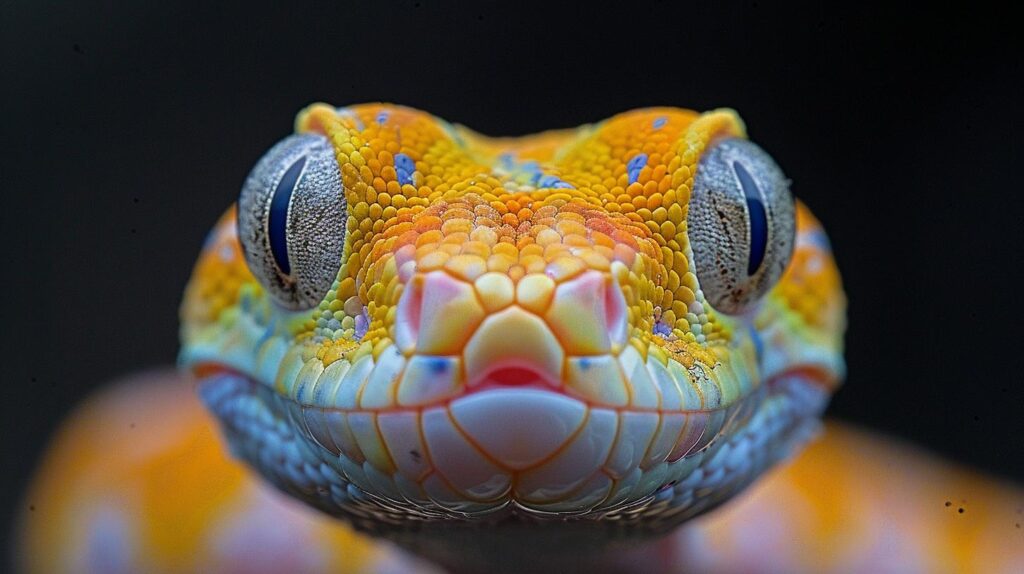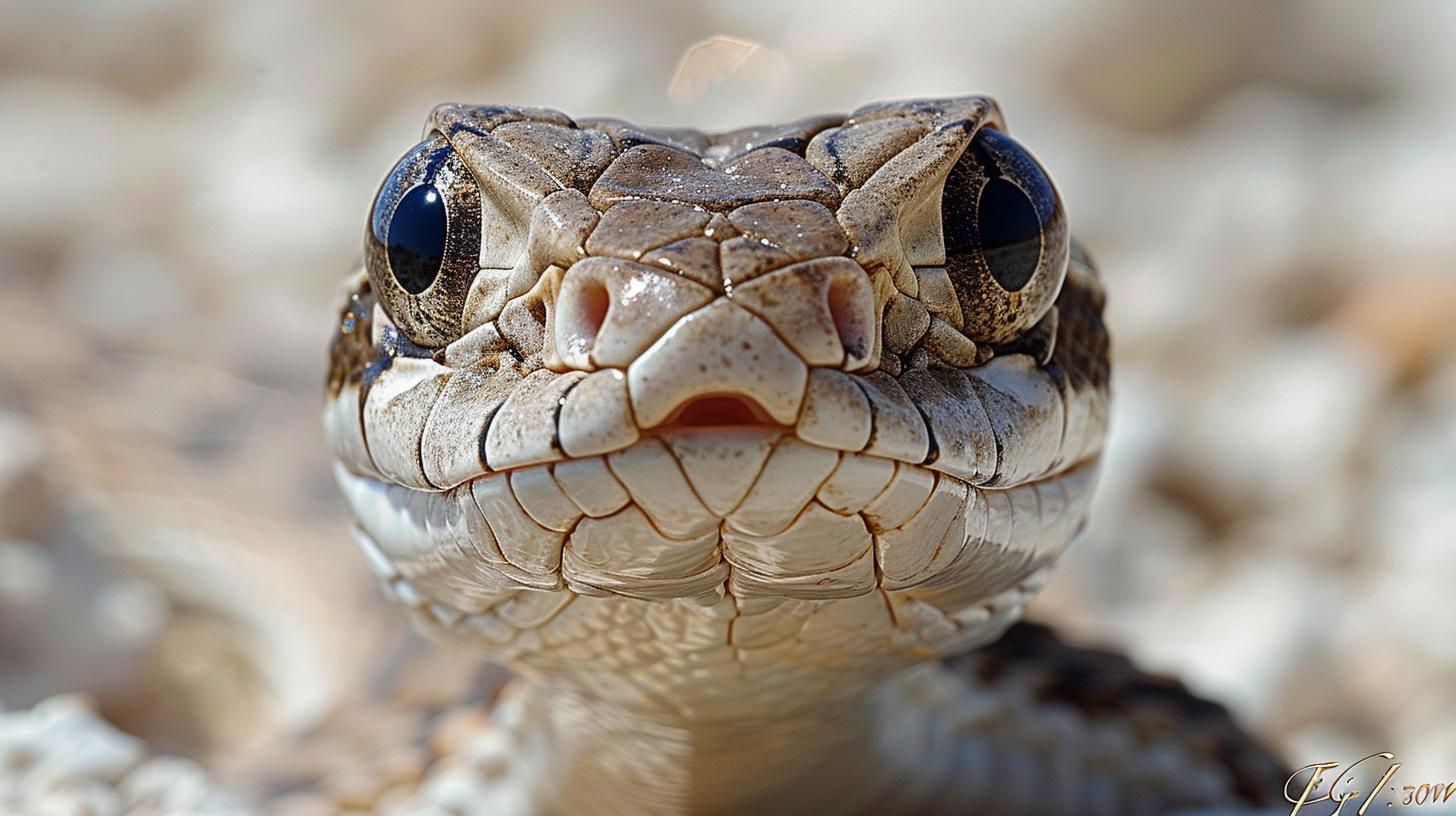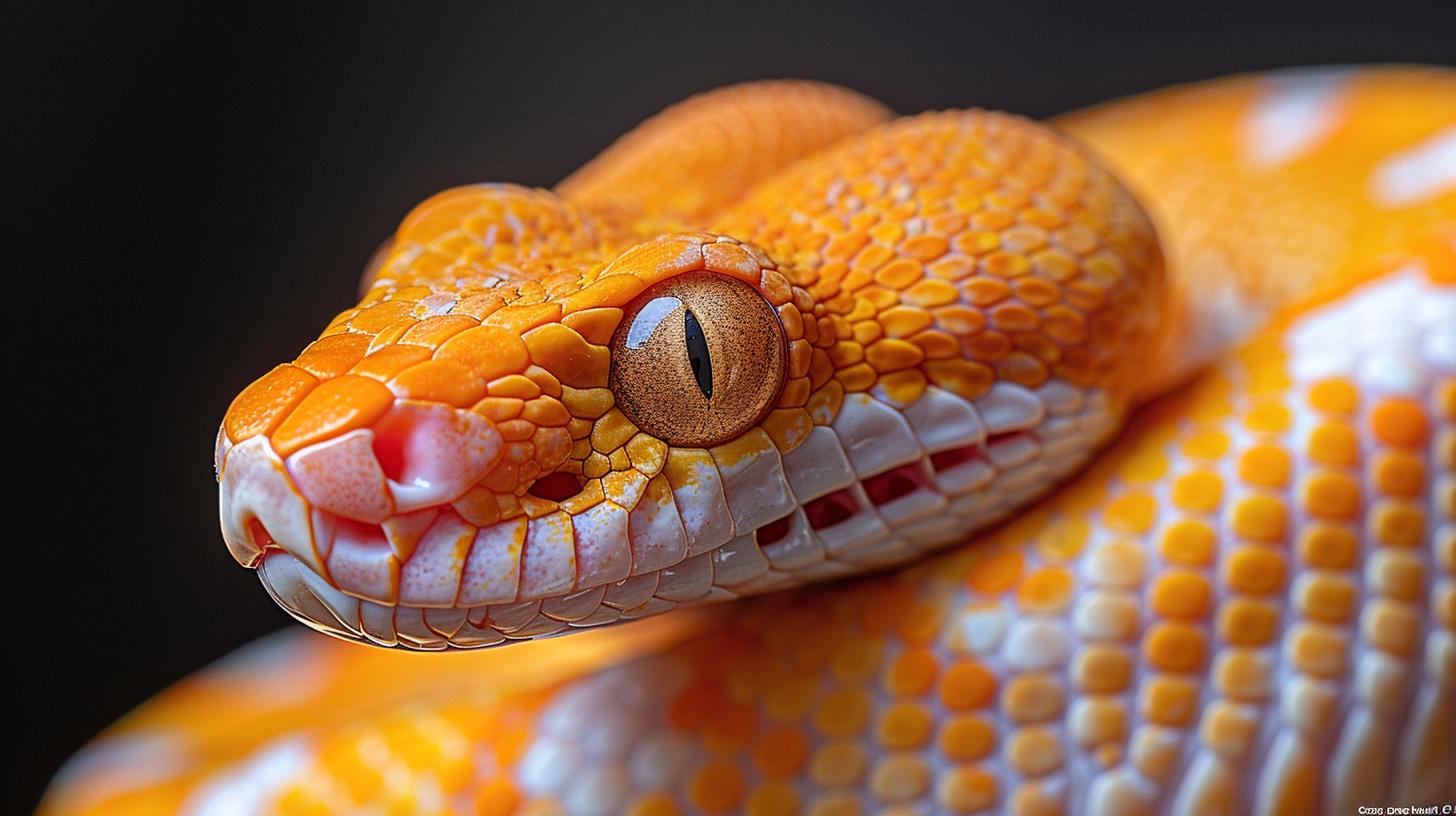Top Treatments for Respiratory Infections in Snakes

Understanding Respiratory Infections in Snakes
When it comes to snake respiratory treatments, knowledge is power. The first step toward ensuring the well-being of these exotic pets is recognizing the early signs of respiratory infections, a common ailment that can significantly impact their health.
Respiratory issues in snakes often manifest as wheezing, mucus buildup around the mouth, and an unusual level of lethargy-symptoms that pet owners should not take lightly. By understanding these key indicators, owners can promptly seek veterinary care, greatly improving the chances of a full recovery for their slithering companions.
The root causes of respiratory distress in snakes are varied, with environmental factors playing a significant role. Poorly managed humidity levels and inadequate temperatures within the enclosure can create a breeding ground for bacterial and viral infections.
These conditions stress the snake's immune system, paving the way for respiratory problems to develop. By delving into these common culprits, snake owners can make informed decisions about their pet's habitat-adjusting settings to optimal levels to foster a healthier living environment.
Diagnosing respiratory infections accurately is crucial for effective treatment. This calls for professional intervention; veterinarians equipped with specialized tools and knowledge conduct thorough physical examinations, X-rays, and lab tests to identify the culprit behind a snake's breathing difficulties. Understanding this diagnosis is vital for selecting an appropriate treatment path. Whether it involves conventional medication or alternative therapeutic measures, each approach aims to target the infection directly while managing symptoms to provide relief to your pet snake.
Through a holistic exploration of respiratory infections in snakes, from initial signs to diagnostic procedures and treatment options, this guide equips pet owners with essential knowledge. It underscores the importance of proactive health management practices-highlighting how early detection coupled with prompt veterinary care can make all the difference in your snake's recovery journey.
Common Causes Behind Respiratory Problems in Snakes
Understanding the root causes of respiratory problems in snakes is essential for every snake owner. Just like in humans, a snake's respiratory health can be compromised by a variety of environmental and biological factors. It's crucial to identify these factors early to prevent the onset of more severe issues. This understanding not only helps in providing immediate care but also aids in preventing future episodes by adjusting the care routine accordingly.
Environmental factors play a significant role in the health of reptiles. Snakes, being ectothermic, rely heavily on their environment to regulate body temperature and overall health. Thus, maintaining optimal living conditions within their enclosure is paramount. This section will delve into how these elements contribute to respiratory distress in snakes, emphasizing the importance of proper habitat management.
Improper Humidity Levels
One of the most common causes behind respiratory infections in snakes is incorrect humidity levels within their enclosure. Snakes require specific humidity levels that mimic their natural habitat to thrive. Too low humidity can lead to dehydration, making it difficult for snakes to shed their skin and potentially leading to upper respiratory tract infections due to dry air passages.
Conversely, overly humid environments can create an ideal breeding ground for bacteria and fungi, increasing the risk of infection. Monitoring and adjusting the humidity with devices such as hygrometers can significantly decrease the likelihood of respiratory complications.
Inadequate Temperatures
Similarly, inappropriate temperature settings are another critical factor that could predispose snakes to developing respiratory illnesses. If the temperature is too cold, it can suppress a snake's immune system making them more susceptible to infections. On the other hand, excessively high temperatures can lead to overheating and stress, further weakening their immune function. Utilizing thermostats and regularly checking on heat sources can help ensure that your snake's enclosure remains at an optimum temperature range conducive to good health.
Bacterial or Viral Infections
Beyond environmental causes, bacterial or viral agents often lie at the heart of many snake respiratory treatments Whether these pathogens are introduced through contaminated food sources, exposure to other infected animals, or poor hygiene practices within the enclosure they can quickly take hold if not addressed promptly.
Maintaining cleanliness within your pet's habitat cannot be overstated; regular cleaning schedules together with periodic deep cleanses are imperative in keeping bacterial growths and viral contagions at bay. Additionally knowing when and how antibiotics or anti-inflammatory medications should be used forms part of an effective treatment plan against such infections.
Recognizing these common contributors allows snake owners and caregivers to better manage their pet's living environment effectively minimizing risks associated with respiratory problems. Keeping vigilant about changes in behavior or physical symptoms related directly towards breathing difficulties significantly aids early intervention strategies ensuring quicker recovery periods for affected snakes.
Diagnosing Respiratory Infections in Snakes
Recognizing the early signs of respiratory infections is a critical step for snake owners, yet diagnosis requires expertise that can accurately pinpoint the problem and its severity. When it comes to diagnosing respiratory infections, veterinarians use a combination of clinical assessments and modern diagnostic tools to offer a definitive diagnosis.
Physical examinations serve as the initial approach where the vet may look for visual cues such as mucus discharge from the nose or mouth, abnormal breathing sounds, or general lethargy. These symptoms could indicate a respiratory infection but require further investigation to confirm.
To delve deeper, X-rays and lab tests play pivotal roles in diagnosing respiratory issues in snakes. X-rays allow veterinarians to observe any abnormalities in the snake's lungs and airways that aren't visible from an external examination. Fluids or swelling due to infection can often be identified through this imaging technique, providing clear evidence of respiratory distress.

Simultaneously, lab tests, including bloodwork and microbial cultures, can identify specific pathogens responsible for the infection. This information is vital for selecting effective *snake respiratory treatments*, ensuring that any medications used will target the underlying cause of illness directly.
| Diagnostic Tool | Purpose |
|---|---|
| Physical Examination | Detect visual clues indicative of respiratory issues. |
| X-rays | Reveal internal abnormalities within lungs and airways. |
| Lab Tests (Bloodwork & Microbial Cultures) | Identify pathogens causing the infection; Guide treatment selection. |
Once a veterinarian has identified both the presence of a respiratory infection and its causative agent through these diagnostic measures, it's possible to proceed with an informed approach towards treatment. This might involve prescribing antibiotics if bacteria are involved or antiviral medications for viral causes, alongside supportive care like increasing enclosure humidity or nebulization therapy. The aim is not only to alleviate immediate symptoms but also address any environmental factors contributing to vulnerability towards infections.
As we transition into discussing conventional medicine in treating these conditions, it's essential to emphasize that each treatment plan must be customized based on individual diagnostic results. Understanding what works best under different circumstances ensures both short-term relief and long-term health for snakes recovering from respiratory infections.
Snake Respiratory Treatments
Respiratory infections in snakes can be a serious health concern, and understanding the role of conventional medicine in addressing these issues is crucial for effective treatment. When diagnosed with a respiratory infection, snakes may require an intervention that goes beyond mere environmental adjustments.
This is where conventional medicinal treatments come into play, offering a clinical approach to combat the infection directly. Antibiotics and anti-inflammatory medications represent the cornerstone of this methodology, designed not just to halt the infection but also to alleviate symptoms, providing much-needed relief to the affected reptile.
The Significance of Antibiotics
Antibiotics are often the first line of defense against bacterial respiratory infections in snakes. After a precise diagnosis by a veterinary professional, specific antibiotics are prescribed based on the type of bacteria causing the infection.
It's essential for snake owners to understand that administering antibiotics should always follow vet recommendations closely, as improper use can lead to resistance or exacerbate possible side effects. In cases where snakes struggle with swallowing due to their condition, injections might be preferred over oral administration, ensuring that the treatment effectively reaches its target.
Anti-Inflammatory Medications
Besides combating bacteria directly, reducing inflammation within the respiratory system plays a pivotal role in aiding recovery. Anti-inflammatory medications can help decrease swelling and irritation in the airways, making breathing easier for the snake and promoting recovery from snake respiratory treatments As these drugs mainly address symptoms and discomfort rather than attacking pathogens themselves, they often accompany antibiotic therapy for a more comprehensive treatment strategy.
Crucial Role of Vet Supervision
A common thread in managing snake respiratory infections through conventional medicine is the indispensable role of veterinary supervision. Beginning with accurate diagnosis alluding to radiographic imaging or laboratory tests, vets tailor treatments specifically to each case's needs - considering factors like age, health condition, and severity of symptoms. The importance of adhering strictly to prescribed treatment schedules cannot be overstressed since deviation not only hampers recovery but might also pave way for complications or relapse.
By integrating advanced medicinal practices such as antibiotics and anti-inflammatory solutions under professional guidance, caretakers can navigate through challenging times when their reptiles face respiratory distress. By giving priority to precisely directed conventional cautionary measures-grounded upon thorough medical insights-owners aid significantly in steering their cherished snakes back onto paths leading towards renewed health and vitality.
Alternative Methods for Managing Respiratory Infections in Snakes
Understanding the complexities of respiratory infections in snakes is fundamental for every snake owner. Recognizing the early signs such as wheezing, mucus buildup around the mouth, and general lethargy is not only essential for a timely diagnosis but also sets the stage for effective treatment strategies.
With conventional medicine often being the first line of treatment to combat these infections, it's equally important to be aware of alternative methods that can complement medical treatments or serve as interim solutions in managing a snake's respiratory health.
Environmental adjustments form a pivotal part of these alternative approaches. Ensuring optimal humidity levels within the enclosure can significantly alleviate breathing difficulties in snakes. Respiratory infections tend to thrive in conditions that deviate from a snake's natural habitat-either too dry or excessively humid environments can exacerbate symptoms. By meticulously monitoring and adjusting humidity levels, along with maintaining ideal temperature gradients within their living space, owners can create a conducive environment that supports recovery.
Nebulization therapy emerges as an innovative solution in this spectrum of alternative care options, offering a gentle yet effective method to ease respiratory discomfort. By converting liquid medication into a fine mist, nebulizers allow for direct delivery to the lungs, providing relief to snakes suffering from congestion and other breathing challenges.
This technique, often used alongside prescribed snake respiratory treatments, highlights the evolving landscape of reptile care-emphasizing non-invasive methods that prioritize the well-being of these exotic pets. Through integrating these alternative practices with traditional veterinary care, owners can ensure a comprehensive approach to managing respiratory infections, underscoring the importance of both prevention and effective treatment modalities.

The Role of Nutrition and Hydration in Recovery
Proper nutrition and hydration are critical to a snake's recovery from a respiratory infection. These two elements not only support the snake's immune system but also play an influential role in helping the body combat infections effectively. When a snake is battling a respiratory condition, its body requires more energy and nutrients to fight off the illness.
This is where a balanced diet enriched with essential vitamins and minerals comes into play. Providing your snake with high-quality food can significantly contribute to its recovery, ensuring it has the strength needed for a healthy rebound.
Furthermore, hydration is equally pivotal during this period of recuperation. Snakes with respiratory infections may experience difficulties in regular breathing, which can lead to decreased activity levels, including less frequent drinking. Consequently, owners need to monitor their pets' water intake closely and encourage hydration through various means. The incorporation of moisture-rich foods or slightly modifying the enclosure's humidity can make it easier for snakes to maintain adequate hydration levels during their recovery phase.
In addition to prioritizing nutrition and hydration, snake respiratory treatments should also focus on creating an optimal environment that supports healing. Adjustments such as ensuring the enclosure maintains appropriate temperature gradients and offering stress-free handling (or minimizing handling altogether) can make significant differences in how well and quickly a snake recovers. These conditions aid in reducing physiological stress on the snake, enhancing their overall well-being during treatment and speeding up recovery times.
To sum up, understanding how vital proper nutrition, hydration, and conducive living conditions are for recovering snakes marks a significant step toward facilitating their recuperation from respiratory infections. Owners equipped with this knowledge are better prepared to provide care that goes beyond administering medications or alternative treatments-it completes a holistic approach designed for swift recoveries while bolstering defenses against potential future health issues.
Preventing Respiratory Infections in Snakes
In wrapping up our exploration on the vital topic of respiratory infections in snakes and the array of treatments available, it's evident that these remarkable reptiles require meticulous care and prompt action at the sign of illness to thrive. Beginning with recognizing the early symptoms such as wheezing, excess mucus, and lethargy, to understanding the myriad causes, inclusive of environmental stressors and infectious agents.
This layered insight empowers snake owners to not only identify but also address respiratory ailments with precision and informed confidence.
Delving deeper into the realm of therapeutic interventions, from conventional approaches leveraging antibiotics and anti-inflammatory medications to innovative alternative methods like nebulization therapy and environmental optimization-each avenue offers hope and healing. Key too is the emphasis on preventative strategies which underscore regular veterinary check-ups, proper habitat maintenance, and a balanced diet with adequate hydration as cornerstone practices for fostering robust health in our serpentine companions.
As we conclude this journey through diagnosis, treatment, and prevention of snake respiratory infections, let us remember that knowledge is power-the power to effect positive change in the lives of these fascinating creatures. Our website stands as a beacon for all enthusiasts eager to deepen their understanding and enhance their ability already keen on offering the best care for their pets.
So dive further into our rich reservoir of articles where curiosity meets expertise, ensuring your journey in pet care is both enlightening and rewarding. Embark on exploring more about snake respiratory treatments among other insightful topics today-because your quest for knowledge ensures a brighter future for you and your slithery friend.
Frequently Asked Questions
How Do You Treat a Respiratory Infection in Snakes?
Treating a respiratory infection in snakes involves consulting with a veterinarian who specializes in reptiles to ensure proper diagnosis and treatment. The vet may prescribe antibiotics specifically safe for snakes, recommend increasing the habitat's temperature slightly to aid in the snake's immune response, and suggest adjustments in humidity levels.
Managing environmental conditions plays a crucial role in the recovery process.
What to Do if Your Snake Is Wheezing?
If your snake is wheezing, it's an indication that veterinary attention is needed as soon as possible. Wheezing can be a symptom of a respiratory infection or obstruction, both requiring professional assessment. Meanwhile, ensure the terrarium has optimal temperature and humidity levels to support breathing but avoid making significant changes without veterinary guidance.
Are Respiratory Infections Common in Snakes?
Respiratory infections are relatively common among captive snakes due to factors like improper humidity, inadequate temperature gradients within their enclosure, or stress weakening their immune system. Recognizing symptoms early and maintaining a well-regulated environment significantly reduces the risk of these infections.
What Antibiotics Are Safe for Snakes?
For snakes suffering from respiratory infections, veterinarians might prescribe antibiotics such as enrofloxacin or ceftazidime considering these have been found safe for reptilian use under professional supervision. Dosage and duration will depend on the snake's specific condition and needs assessed by the veterinarian.
Can I Treat a Snake Respiratory Infection at Home?
While mild respiratory issues caused by slight environmental deficiencies can often be managed at home by adjusting temperature and humidity levels within the enclosure, actual infections require professional medical treatment. Home care should focus on providing an optimal environment and nutritional support but not replace veterinary intervention when antibiotics may be required.
Will Snake Respiratory Infection Go Away on Its Own?
A snake respiratory infection is unlikely to resolve on its own without appropriate treatment; neglecting it can lead to more serious health complications or even become fatal over time. Professional diagnosis and treatment plan are essential for recovery, coupled with adjustments in husbandry practices to prevent reoccurrence.
Leave a Reply
You must be logged in to post a comment.